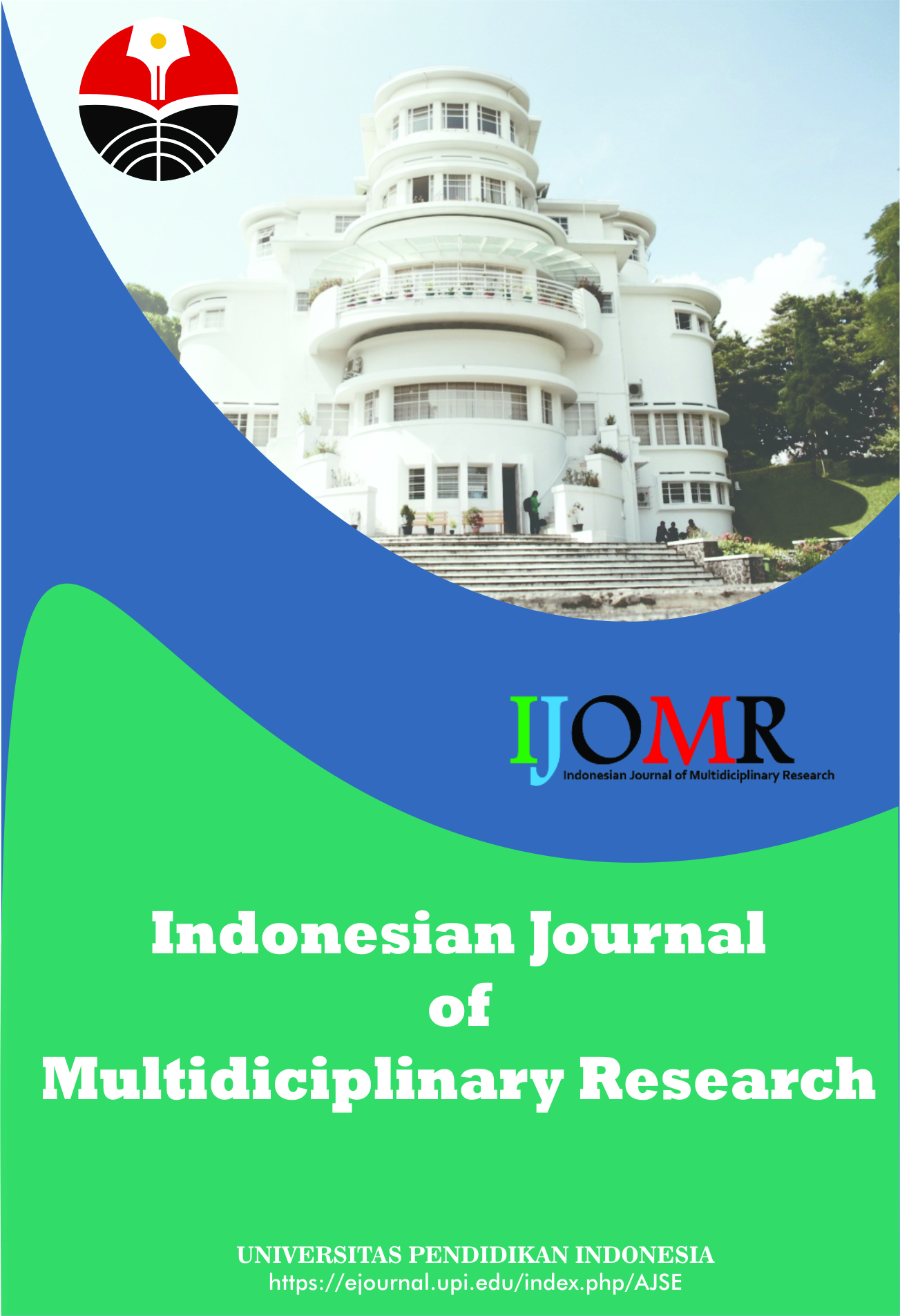Female Students, Dropping out of Education
Abstract
Keywords
Full Text:
PDFReferences
Alam, M. M., and Hoque, M. N. (2022). The personal, social, and cultural perspectives on female secondary school dropouts in Bangladesh: An investigation into pabna district. South Asian Journal of Social Sciences and Humanities, 3(3), 73-93.
Amin, S., Quayes, S., and Rives, J. M. (2006). Market work and household work as deterrents to schooling in Bangladesh. World Development, 34(7),1271-1286.
Arafat, A., Ahmad, N. A., and Ismail, S. F. S. (2021). Socio-cultural gender norms and economic barriers in the context of rural high school girls’ dropout in Bangladesh: A qualitative study. Malaysian Journal of Social Sciences and Humanities (MJSSH), 6(8), 436-447.
Arends-Kuenning, M., and Amin, S. (2001). Women's capabilities and the right to education in Bangladesh. International Journal of Politics, Culture, and Society, 15, 125-142.
Begum, H. A., Perveen, R., Chakma, E., Dewan, L., Afroze, R. S., and Tangen, D. (2019). The challenges of geographical inclusive education in rural Bangladesh. International Journal of Inclusive Education, 23(1), 7-22.
Bhowmik, J., Biswas, R. K., and Hossain, S. (2021). Child marriage and adolescent motherhood: A nationwide vulnerability for women in Bangladesh. International Journal of Environmental Research and Public Health, 18(8), 4030.
Cameron, S. (2011). Whether and where to enrol? Choosing a primary school in the slums of urban Dhaka, Bangladesh. International Journal of Educational Development, 31(4), 357-366.
Cameron, S. J. (2017). Urban inequality, social exclusion and schooling in Dhaka, Bangladesh. Compare: A Journal of Comparative and International Education, 47(4), 580-597.
Chaudhuri, S., Roy, M., McDonald, L. M., and Emendack, Y. (2021). Coping behaviours and the concept of time poverty: A review of perceived social and health outcomes of food insecurity on women and children. Food Security, 13(4), 1049-1068.
Farah, N., and Upadhyay, M. P. (2017). How are school dropouts related to household characteristics? Analysis of survey data from Bangladesh. Cogent Economics and Finance, 5(1), 1268746.
Hasan, M. N. (2020). Factors associated with attrition of girls students from school in Bangladesh. Journal of Scientific Research, 12(1), 29-38.
Heath, R., and Mobarak, A. M. (2015). Manufacturing growth and the lives of Bangladeshi women. Journal of Development Economics, 115, 1-15.
Hoque, M. A. (2013). Eve teasing in Bangladesh: Causes and impact on society, a study from Islamic perspective. The International Journal of Social Sciences, 15(1), 1-11.
Islam, R., and Hoque, M. M. (2022). Trade-off between schooling and labor for children: understanding the determinative factors among rural households in Bangladesh. Frontiers in Sociology, 7, 1-13.
Jabbar, M. A., Sultana, S. R., Hossain, M. T., and Rana, S. (2010). Dropping out of children from schools in Bangladesh, 4(4), 320-329.
Karmaker, R. (2022). The education thought of bangabandhu sheikh mujibur rahman modernizing Bangladesh. Education, 8(8), 32-37.
Karmaker, R. (2023). Failing to learn English. Indonesian Journal of Multidiciplinary Research, 3(2), 235-244.
Karmaker, R. (2023). Psychological issues in Bangladeshi children for covid- 19: Losing interest in education. Indonesian Journal of Community and Special Needs Education, 3(2), 103-112.
Karmaker, R. (2023). Women victimizing of violence, losing freedom, a focus on sherpur. International Journal of Scientific Research in Multidisciplinary Studies, 9(2), 17-24.
Khanam, R. (2008). Child labour and school attendance: Evidence from Bangladesh. International Journal of Social Economics, 35(1/2), 77-98.
Latif, A., Choudhary, A. I., and Hammayun, A. A. (2015). Economic effects of student dropouts: A comparative study. Journal of Global Economics, 3(2), 1-4.
Mahmud, S., and Amin, S. (2006). Girls’ schooling and marriage in rural Bangladesh. Children's lives and schooling across societies. Emerald Group Publishing Limited, 15, 71-99.
Milon, M. R. K., Hossain, M. R., and Alam, M. R. (2018). Factors influencing on dropouts at undergraduate level in private universities of Bangladesh: A case study. Australasian Journal of Business, Social Science and Information Technology, 4(4), 177-188.
Nasrin, S. (2011). Crime or custom? Motivations behind dowry practice in rural Bangladesh. Indian Journal of Gender Studies, 18(1), 27-50.
Rahman, M. A. (2021). Factors leading to secondary school dropout in bangladesh: The challenges to meet the SDG’S targets. Journal of the Asiatic Society of Bangladesh, Science, 47(2), 173-190.
Sabates, R., Hossain, A., and Lewin, K. M. (2013). School drop out in Bangladesh: Insights using panel data. International Journal of Educational Development, 33(3), 225-232.
Sarker, M. N. I., Wu, M., and Hossin, M. A. (2019). Economic effect of school dropout in Bangladesh. International Journal of Information and Education Technology, 9(2), 136-142.
Schurmann, A. T. (2009). Review of the Bangladesh female secondary school stipend project using a social exclusion framework. Journal of Health, Population, and Nutrition, 27(4), 505.
Shahidul, S. M. (2013). Household decision-making process: It's effect on school dropout behavior for girls in the secondary school level in Bangladesh. International Education Studies, 6(1), 132-141.
Shahidul, S. M. (2014). Parents’ class background and hypergamy in the marriage market of Bangladesh: Does the dowry affect school dropout among girls?. The Asia-Pacific Education Researcher, 23, 709-715.
Shahidul, S. M., and Karim, A. H. M. Z. (2015). Factors contributing to school dropout among the girls: A review of literature. European Journal of Research and Reflection in Educational Sciences, 3(2), 25-36.
Shahidul, S. M., and Karim, A. H. M. Z. (2015). Factors contributing to school dropout among the girls: A review of literature. European Journal of Research and Reflection in Educational Sciences, 3(2), 25-36.
Shikdar, M. K., Biswas, A. K., Tanvir, S., and Tabassum, T. (2013). Mitigating problems of destitute children Dropping out from school and involving in under aged labour. Research Journal Social Sciences, 2(7), 33-41.
Streatfield, P. K., Kamal, N., Ahsan, K. Z., and Nahar, Q. (2015). Early marriage in Bangladesh: Not as early as it appears. Asian Population Studies, 11(1), 94-110.
Uddin, M. E. (2021). Teenage marriage and high school dropout among poor girls: A narrative review for family pathways in Bangladesh. Journal of Research in Social Sciences and Language, 1(1), 55-76.
DOI: https://doi.org/10.17509/ijomr.v4i1.67213
Refbacks
- There are currently no refbacks.
Copyright (c) 2024 Kantor Jurnal dan Publikasi, Universitas Pendidikan Indonesia (UPI)

This work is licensed under a Creative Commons Attribution-ShareAlike 4.0 International License.
Indonesian Journal of Multidiciplinary Research (IJOMR) is published by Universitas Pendidikan Indonesia (UPI)















